J.G. Ballard’s The Drowned World
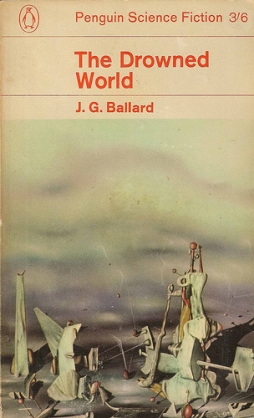 My copy of J.G. Ballard’s The Drowned World has an about-the-author section that describes the 1962 book as “a brilliant first novel that won him instant acclaim and had a dramatic effect on the state of science fiction.” Even allowing for the typically excessive claims of PR text, this is inaccurate: Ballard’s first novel was actually The Wind From Nowhere, published in 1961 and written in two weeks. Still, Ballard’s consistently downplayed and even disowned the earlier book, so let’s take him at his word. How does The Drowning World look fifty years on?
My copy of J.G. Ballard’s The Drowned World has an about-the-author section that describes the 1962 book as “a brilliant first novel that won him instant acclaim and had a dramatic effect on the state of science fiction.” Even allowing for the typically excessive claims of PR text, this is inaccurate: Ballard’s first novel was actually The Wind From Nowhere, published in 1961 and written in two weeks. Still, Ballard’s consistently downplayed and even disowned the earlier book, so let’s take him at his word. How does The Drowning World look fifty years on?
It has to be said that it’s one of those science fiction books that would seem at first glance to be strikingly relevant, if not prophetic — dealing with an idea become disturbingly significant in the years since the story’s first publication. In this case, the book’s set in a future sometime in a mid-21st-century suffering from extreme global warming due to a series of solar storms. The sea levels have risen; the world has drowned. The lead character has no memory of any civilisation we recognise, living with a few million other human beings in the polar latitudes. Reading this book on the heels of news that atmospheric carbon dioxide has passed the 400 parts per million threshold, it’s impossible not to feel a sharpening of one’s interest.
But, like much of the best science fiction, the core of the book is not the science but the fiction. Ballard uses his setting — a flooded tropical London claimed by iguanas and marmosets, totally lacking human life but for a visiting scientific and military expedition and one woman who grew up in the drowned city — to explore strange psychological effects of this particular future. It’s a kind of exploration of depth psychology, of dreams and a collective unconscious. Individual ontogeny is affected by global phylogeny; human identity is affected by a return of the climate and fauna of the Mesozoic era. The book becomes more fascinating as it goes on, increasingly moving away from the science of climate change and using the drowning of the world as a mirror for the submerging of rationality. It is, ultimately, truly concerned with apocalypse: not merely the erasure of the old world, but the making of the world into something new.
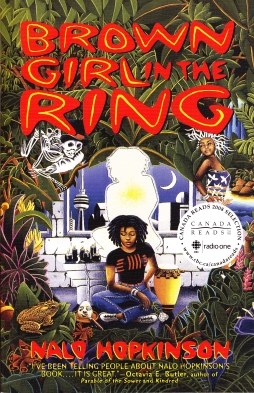 Published in 1998, Nalo Hopkinson’s debut novel was Brown Girl in the Ring, the first winner of the Warner Aspect First Novel Contest. It went on to be shortlisted for the Philip K. Dick Award and the James Tiptree Junior Award, to win the Locus Award in the First Novel category, and to help Hopkinson (who had already published several short stories) win the John W. Campbell Award for Best New Writer. She’s gone on to write five more novels, along with two collections of short stories, as well as editing and co-editing several anthologies.
Published in 1998, Nalo Hopkinson’s debut novel was Brown Girl in the Ring, the first winner of the Warner Aspect First Novel Contest. It went on to be shortlisted for the Philip K. Dick Award and the James Tiptree Junior Award, to win the Locus Award in the First Novel category, and to help Hopkinson (who had already published several short stories) win the John W. Campbell Award for Best New Writer. She’s gone on to write five more novels, along with two collections of short stories, as well as editing and co-editing several anthologies.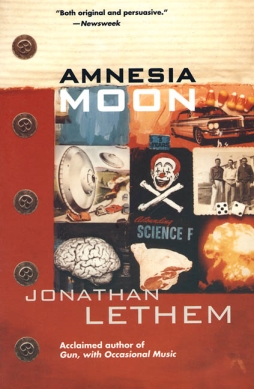 Not long ago, I came across a copy of Jonathan Lethem’s second novel, Amnesia Moon. I was curious: Lethem’s best known for his recent work in mainstream mimetic fiction, but his early novels were science fiction and he also wrote an odd take on Steve Gerber’s already-odd character Omega the Unknown for Marvel Comics in 2007. More, between 2007 and 2009, he edited
Not long ago, I came across a copy of Jonathan Lethem’s second novel, Amnesia Moon. I was curious: Lethem’s best known for his recent work in mainstream mimetic fiction, but his early novels were science fiction and he also wrote an odd take on Steve Gerber’s already-odd character Omega the Unknown for Marvel Comics in 2007. More, between 2007 and 2009, he edited 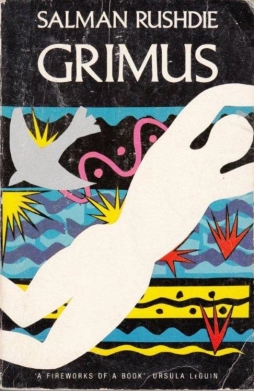 Brian Aldiss
Brian Aldiss 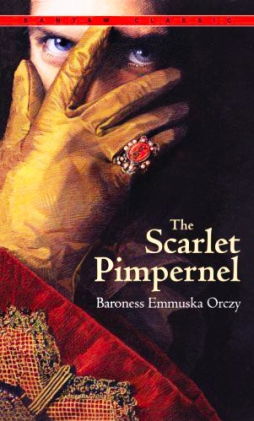 One of the strangest and most distinctive elements of a super-hero is a secret identity. It’s so distinctive we don’t even think about how strange it is. Or, more precisely, how strange the heroic identity is. There’ve been disguises and alter-egos throughout fiction, whether Odysseus showing up at his home incognito before killing his wife’s suitors, or the heroines of Shakespearean comedy dressing up as men and taking male names, or Sherlock Holmes ferreting out clues while masquerading as a humble old book-seller or opium addict. But the super-hero identity, in its classic form, is less a person than an idea: a being known by a code-name, who does not pretend to be a specific person, but instead wears a mask or cloak, and who exists only for one reason — usually to defend against some injustice, to right wrongs, or generally to fight crime. The super-hero identity is not a person or a personality; it’s the idea of a person, the dream of an identity. Much has been written about the symbolic presentation of masculinity the dual identity implies, a weak or nerdy exterior hiding a powerful secret persona. It’s interesting, then, that the idea seems to have been created by a woman.
One of the strangest and most distinctive elements of a super-hero is a secret identity. It’s so distinctive we don’t even think about how strange it is. Or, more precisely, how strange the heroic identity is. There’ve been disguises and alter-egos throughout fiction, whether Odysseus showing up at his home incognito before killing his wife’s suitors, or the heroines of Shakespearean comedy dressing up as men and taking male names, or Sherlock Holmes ferreting out clues while masquerading as a humble old book-seller or opium addict. But the super-hero identity, in its classic form, is less a person than an idea: a being known by a code-name, who does not pretend to be a specific person, but instead wears a mask or cloak, and who exists only for one reason — usually to defend against some injustice, to right wrongs, or generally to fight crime. The super-hero identity is not a person or a personality; it’s the idea of a person, the dream of an identity. Much has been written about the symbolic presentation of masculinity the dual identity implies, a weak or nerdy exterior hiding a powerful secret persona. It’s interesting, then, that the idea seems to have been created by a woman.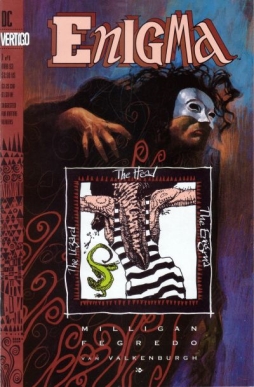 In 1990, the Walt Disney Company launched a new comics imprint, Disney Comics, to publish titles starring their cartoon characters; they’d previously licensed their characters to other comics companies, but the new imprint represented their own entry into the field. The venture met with some initial success and Disney began to plan further imprints, including one under former DC Comics assistant editor Art Young, which would be called Touchmark and feature creator-owned books for ‘mature readers.’ In this context, that meant something like ‘literary fantasy.’ At the time, DC had a number of books labeled for ‘mature readers’ which had gathered critical attention and good sales — among them, Neil Gaiman’s Sandman, Grant Morrison’s Doom Patrol and Animal Man, Jamie Delano’s Hellblazer, and Peter Milligan’s Shade the Changing Man. Young brought some of these writers over to the projected Touchmark line. Announced titles included a book written by Morrison with art by Steve Yeowell, Sebastian O, one by Milligan and artist Duncan Fegredo, The Enigma, and J.M. Dematteis and Paul Johnson’s Mercy.
In 1990, the Walt Disney Company launched a new comics imprint, Disney Comics, to publish titles starring their cartoon characters; they’d previously licensed their characters to other comics companies, but the new imprint represented their own entry into the field. The venture met with some initial success and Disney began to plan further imprints, including one under former DC Comics assistant editor Art Young, which would be called Touchmark and feature creator-owned books for ‘mature readers.’ In this context, that meant something like ‘literary fantasy.’ At the time, DC had a number of books labeled for ‘mature readers’ which had gathered critical attention and good sales — among them, Neil Gaiman’s Sandman, Grant Morrison’s Doom Patrol and Animal Man, Jamie Delano’s Hellblazer, and Peter Milligan’s Shade the Changing Man. Young brought some of these writers over to the projected Touchmark line. Announced titles included a book written by Morrison with art by Steve Yeowell, Sebastian O, one by Milligan and artist Duncan Fegredo, The Enigma, and J.M. Dematteis and Paul Johnson’s Mercy. I don’t often write here about bad books. Partly that’s because I don’t usually care to give them publicity. Partly it’s because I don’t usually care to think further about an unrewarding reading experience. Mostly, though, it’s because to me a bad book is typically an uninteresting book. And what I really want to write about, when I write about a book, is what makes it interesting. Still, there are always exceptions. And of course it’s always worth challenging one’s ideas of what ‘bad’ means. So this time out I want to talk about some books by a writer who was, in her time, notorious for literary badness.
I don’t often write here about bad books. Partly that’s because I don’t usually care to give them publicity. Partly it’s because I don’t usually care to think further about an unrewarding reading experience. Mostly, though, it’s because to me a bad book is typically an uninteresting book. And what I really want to write about, when I write about a book, is what makes it interesting. Still, there are always exceptions. And of course it’s always worth challenging one’s ideas of what ‘bad’ means. So this time out I want to talk about some books by a writer who was, in her time, notorious for literary badness.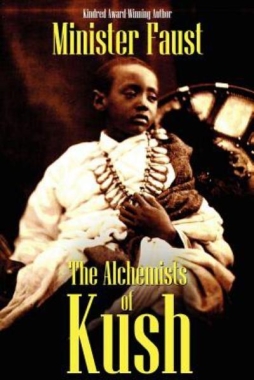 Writing about fantasy fiction seems sooner or later to involve writing about myth. The two aren’t the same, but have a connection difficult to articulate. Similarities and contrasts both feel obvious and yet are hard to nail down. Perhaps it’s fair to say both fantasy and myth challenge consensus reality. But that they differ in the relation they have to truth, or to what is to be taken as truth.
Writing about fantasy fiction seems sooner or later to involve writing about myth. The two aren’t the same, but have a connection difficult to articulate. Similarities and contrasts both feel obvious and yet are hard to nail down. Perhaps it’s fair to say both fantasy and myth challenge consensus reality. But that they differ in the relation they have to truth, or to what is to be taken as truth.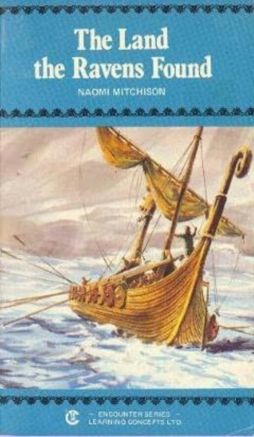 One of the joys you get to have as a reader is the discovery of a new writer, or a new old writer, with a back catalogue of work out there waiting for you. A little while ago, my girlfriend Grace and I were at a book fair when Grace came across a children’s novel called The Land the Ravens Found. First published in 1955, the copy she’d found was a fourth edition, from 1966, suggesting there’d been some demand for the book over the years. It was a story of Viking times and the founding of a settlement in Iceland, written by a woman named Naomi Mitchison. Neither of us had heard of her, but after reading the book, Grace was impressed enough to recommend it to me; after reading it myself, and learning a bit about Mitchison online, I thought it’d be worth writing a little here on both book and author.
One of the joys you get to have as a reader is the discovery of a new writer, or a new old writer, with a back catalogue of work out there waiting for you. A little while ago, my girlfriend Grace and I were at a book fair when Grace came across a children’s novel called The Land the Ravens Found. First published in 1955, the copy she’d found was a fourth edition, from 1966, suggesting there’d been some demand for the book over the years. It was a story of Viking times and the founding of a settlement in Iceland, written by a woman named Naomi Mitchison. Neither of us had heard of her, but after reading the book, Grace was impressed enough to recommend it to me; after reading it myself, and learning a bit about Mitchison online, I thought it’d be worth writing a little here on both book and author.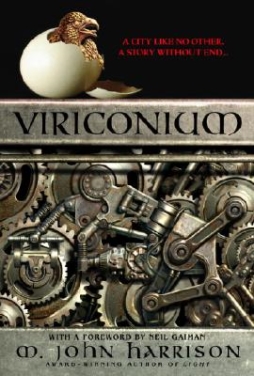 The term ‘dying earth’ comes from
The term ‘dying earth’ comes from